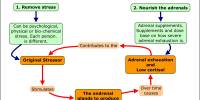Researchers from the University of Liverpool have recently discovered how a distinct group of lung T regulatory cells contributes to resistance to bacteraemic pneumonia.
The most common cause of community-acquired pneumonia is Streptococcus pneumoniae (the pneumococcus), and many cases progress to bloodstream infections.
Despite the widespread use of antibiotic treatment and the availability of efficient vaccinations, such occurrences of bacteraemic pneumonia are linked to a high fatality rate that ranges from 20% in young adults to nearly 60% in the elderly.
One of the main unresolved concerns in pneumococcal research for decades has been why some people are more prone to invasive illness and other people are more resistant.
The Bacterial Pathogenesis and Immunity Group, led by Professor Aras Kadioglu at the University of Liverpool, has now discovered a subset of white blood cells in mice which confer resistance to bacteraemic pneumonia.
Pneumococcal infection remains a major killer globally, despite the successful introduction of pneumococcal vaccine immunisation programmes. Elucidating the mechanisms of how resistance to infection may develop in high-risk groups, offers a great opportunity for us to develop targeted novel therapies.
Dr. Rong Xu
When pneumococci attack the lungs, these cells which have been identified as TNFR2 expressing Tregs are essential for maintaining and managing the host immune system’s frontline responses.
When the function of this particular subset of Tregs is compromised or absent, the immune response to infection becomes dysregulated, resulting in excessive and uncontrolled inflammation that damages tissue and allows bacteria to pass through compromised lung tissue barriers into the bloodstream, leading to sepsis, a serious and fatal condition.
The first author of the study published in Cell Reports, Dr. Rong Xu said: “Pneumococcal infection remains a major killer globally, despite the successful introduction of pneumococcal vaccine immunisation programmes. Elucidating the mechanisms of how resistance to infection may develop in high-risk groups, offers a great opportunity for us to develop targeted novel therapies.”
The study lead, Professor Aras Kadioglu added: “Our findings show that TNFR2 expressing Treg cells are absolutely essential in controlling inflammation in the lungs and preventing the translocation of pneumococci from lung to blood, thereby providing resistance to invasive disease.”
“In susceptible hosts however, these cells are either functionally impaired or absent, which predisposes them to the development of sepsis. This is a significant finding, which opens the door to potential new therapies which may target and modulate these subset of Tregs to prevent and treat severe invasive pneumococcal diseases.”
















